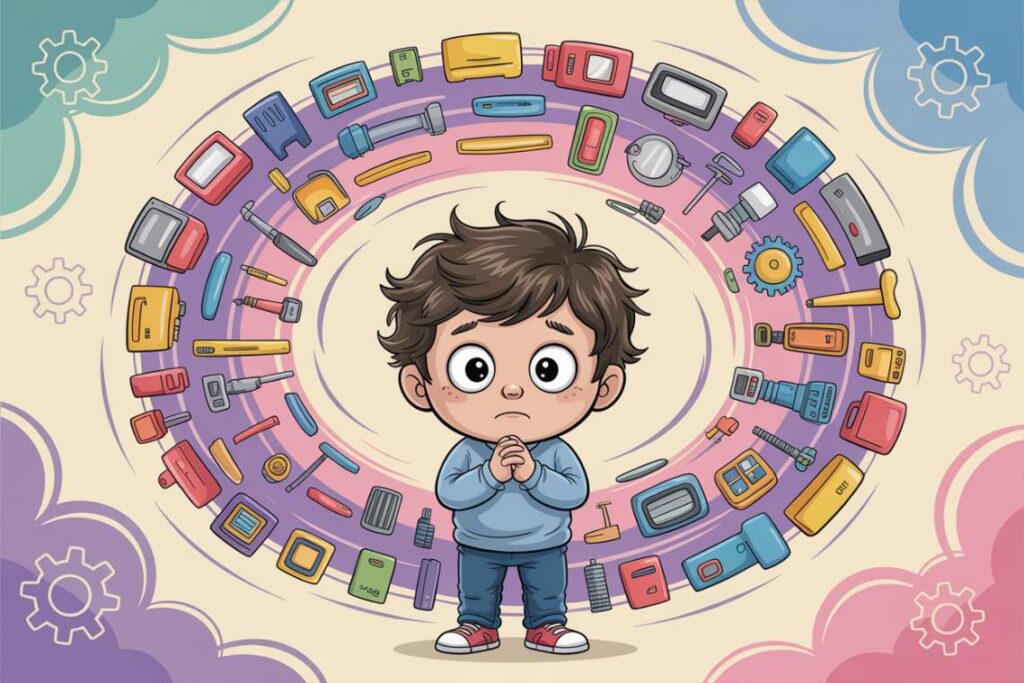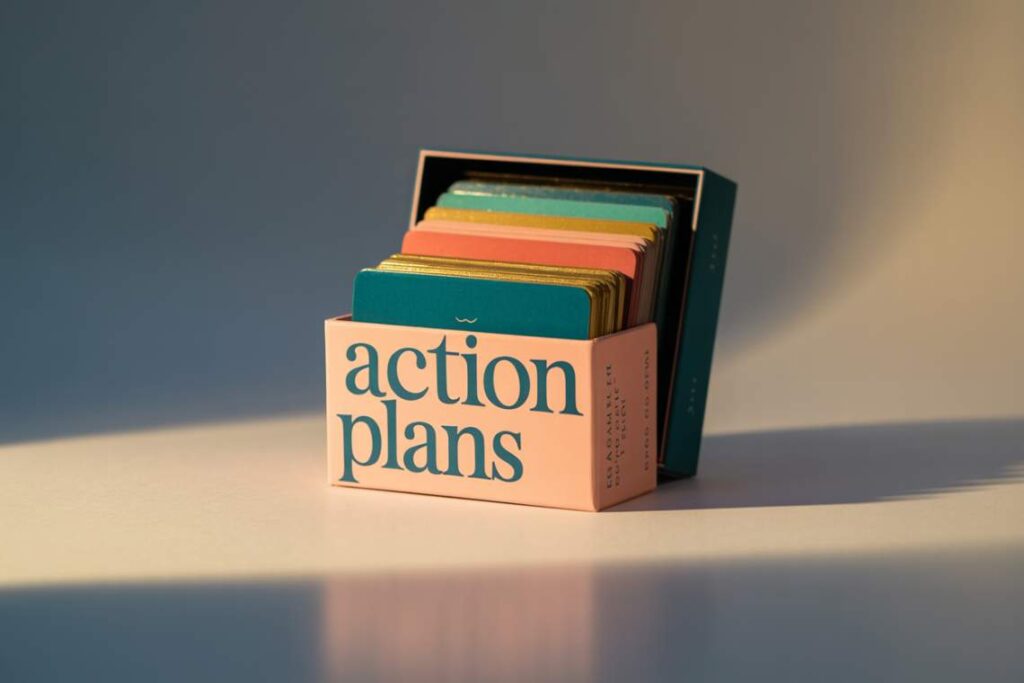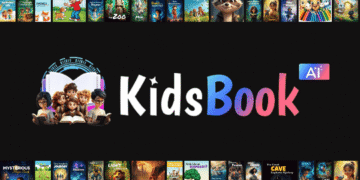Let's address the elephant in the room.
You've seen the YouTube videos. The TikTok success stories. Regular people claiming they're making thousands selling AI-generated children's books with zero artistic skills and minimal time investment.
Your first thought?
“Yeah, right. Another get-rich-quick scheme.”
Your second thought?
“But what if it's actually possible?”
Here's the thing: AI has fundamentally changed the game for creating and selling children's books online. The barriers that used to stop aspiring publishers dead in their tracks—can't draw, can't write, no publisher connections, massive time investment—are crumbling faster than you can say “ChatGPT.”
But before you quit your day job and start dreaming of passive income paradise, we need to have an honest conversation about what's really possible, what's pure hype, and most importantly, whether this opportunity is right for you.


That's why I spent the last three months digging deep into this opportunity. I analyzed successful AI book creators, tested the tools myself, and peaked the real income data from a beginner who started from zero. What I discovered will surprise you.
Ready? Let's zoom in on the honest reality of AI children's books as an income opportunity.
Why Use AI for Children's Books? The Low-Barrier, High-Speed Advantage
Here's the thing about traditional children's book creation: it's been deliberately exclusive for decades.
Want to write? You better have storytelling chops honed through years of practice. Need illustrations? That's either expensive outsourcing or years mastering digital art. Publishing? Good luck get out of the woods without industry connections.
AI changes everything. And I mean everything.
The Skill Barrier Just Got Bulldozed
Can't draw a stick figure that doesn't look like it needs medical attention? Doesn't matter anymore.
Tools like Midjourney and DALL-E can generate stunning, professional-quality illustrations from simple text descriptions. We're talking about artwork that would've cost $50-200 per illustration from a freelance artist, now created in seconds for pennies.
Can't write engaging stories? AI writing assistants like ChatGPT and Claude can help you brainstorm plots, develop characters, and even write entire manuscripts. No, they won't win you a Pulitzer, but they'll help you create stories that kids actually enjoy.
Think about that for a second.
The two biggest barriers to entry—artistic ability and writing talent—just became optional.
Not irrelevant, but optional.


Here's what this means for you: The skill barrier that kept 95% of people out of children's book creation? It's gone.
From Idea to Published Book in Days, Not Years
Traditional children's book publishing? You're looking at 18-24 months from manuscript to bookshelf. That's if you're lucky enough to land a publisher.
With AI assistance? Forget that 18-24 month marathon. You could be looking at getting your book from a spark of an idea to ‘live on Amazon' in a timeframe that feels more like a sprint – think a week, maybe even less for super-simple projects once you get the hang of it.
Here's a possible game plan:
- Day 1-2: Nail down your story concept, outline, and get that AI writing assistant humming.
- Day 2-3: Time for the AI image generator to work its magic.
- Day 3-4: Lay it all out neatly using Canva or your chosen tool.
- Day 4-5: Get it uploaded to Amazon KDP, tweaking your listing.
- Day 5-7: Boom. You're a published author.
Now, here’s a kicker: some of these newer, dedicated AI book creation platforms are boasting that you can get a complete first draft of a book – story, illustrations, the works – done in under an hour. Seriously. Of course, you'll still want to polish it, format it for KDP, and do your market research, which takes time. But the raw creation speed? It’s hitting ludicrous levels. The point is, the speed from ‘idea' to ‘actual book' has fundamentally shifted.
No agents. No rejection letters. No waiting years to see if your idea has legs.
One creator I interviewed published her first AI children's book in 3 days and made her first sale within 48 hours of going live on Amazon KDP. Was it a masterpiece? No. Did it validate the process and give her confidence to improve? Absolutely.
The psychology here matters. When you can see results quickly, you build momentum. When projects drag on for months, motivation dies.
The Investment That Won't Break Your Bank
Traditional route costs:
- Professional illustrator: $3,000-10,000
- Editor: $500-2,000
- Publisher submission fees: $200-500
- Total: $3,700-12,500 (with no guarantee of success)
The ‘Tool Subscription' Stack: This is where you're paying monthly for a few key tools. Maybe $20 for your AI writer, another $10-$30 for your image AI, and perhaps $13 if you go for Canva Pro. So, you're in for roughly $43-$63 a month, and you can usually cancel anytime. This is great if you like picking and choosing your tools.
The ‘All-in-One Platform' Approach: Then there are these dedicated book creation platforms. Often, these come with a different kind of price tag – maybe a one-time fee to get you started with a solid chunk of features and credits, and then options to grab bigger packages if you decide you want to go unlimited or get all the bells and whistles. Sometimes, that initial one-time buy can be less than a couple of months of the subscription stack, especially if they’re running a launch deal.
The bottom line? You’re looking at something closer to 1-5% of the traditional investment, with the freedom to test out a bunch of book ideas instead of pouring all your hopes and cash into a single shot.
So I can sum up the real advantage: because your overhead is minimal, you can afford to experiment. Try different niches, test various story styles, explore unique concepts—all without the financial pressure that kills creativity.
How to Get Started with AI for Children's Books
Stop right here if you're thinking about diving into 47 different AI tools.
The biggest mistake I see beginners (including myself) make? They see the opportunity but get paralyzed by the sheer number of AI tools flooding the market. They spend weeks researching every possible AI platform instead of picking a simple stack and getting started.
So, how do you cut through the noise? Well, a lot of folks go the route of patching together a few specialized tools. Think one AI for writing your story, another for whipping up the pictures, and a third for laying it all out. That's one way to play it, and you can get decent results if you're willing to learn each piece of the puzzle.
Your focused toolkit, if you go this DIY route, might look like this:
- One AI writing assistant (like ChatGPT or Claude – the free versions are often plenty to start)
- One AI image generator (Midjourney's popular, but Leonardo AI and DALL-E 3 via Bing have free options)
- One layout tool (Canva's a star, free or Pro; Google Slides is your no-cost warrior)
That's the common three-piece combo. But hold on a second, because there's another path opening up that's got people talking: all-in-one platforms built just for making these kinds of books. Instead of juggling different subscriptions and interfaces, these tools aim to put everything – story, art, narration, formatting – under one hood. For some, especially if you want to hit the ground running without becoming an AI tool research expert, this unified approach could be the real game-changer. We'll touch on specific platforms in other deep dives, but it's an option you need to know exists right alongside the DIY method.


The Only Three Tools You Need to Start
Forget the 47 different AI platforms the “experts” are pushing. You need exactly three types of tools to begin:
1. Text AI (Pick ONE):
- ChatGPT (reliable, versatile, great for beginners)
- Claude (excellent for creative writing)
- Start with the free versions—they're more than enough
2. Image AI (Pick ONE):
- Midjourney ($10/month – best quality/consistency)
- Leonardo AI (free tier available – good for testing)
- DALL-E 3 via Bing (free – decent for simple illustrations)
3. Layout Tool:
- Canva (free version works, Pro is better)
- Google Slides (completely free alternative)
That's it. Three tools. Not thirty.
Why this matters: Each tool serves a specific function. Master these three, and you can create professional-looking children's books. Add more tools later—start simple.
Master These Two Skills and You're 90% There
Skill #1: Basic Prompting
Prompting is just your way of telling the AI what you want it to cook up. Clear, specific language is your friend here. Think of it like giving directions to a super-talented assistant who takes things very, very literally.
So, instead of a vague ‘Make a story about a cat,' you'd say something like: ‘Write a 500-word children's story for ages 4-6 about a curious orange cat named Whiskers who learns about friendship when he gets lost in a magical garden…'
You get the idea. Specificity is your superpower.
Same deal for images. ‘Draw a cat'? Meh. ‘Cute cartoon orange cat with big green eyes, sitting in a colorful magical garden…' Now you’re talking!
The key insight?
Whether you're typing into a general AI like ChatGPT or using the input fields on an all-in-one book creation platform, the AI responds better to detailed, specific requests. Some newer platforms are designed to be pretty intuitive, even if you're not a ‘prompt engineer,' by guiding you with simpler inputs or keywords. But still, spending an extra 30 seconds thinking through what you really want to see can save you a ton of editing later.
Skill #2: Curation and Light Editing
AI gives you raw material. Your job? Polish it into something special.
This means:
- Checking story flow and age-appropriateness
- Ensuring character consistency across images
- Adding your human touch—a clever twist, a memorable phrase, a unique perspective
You're not rewriting everything. You're adding the 10% that makes it uniquely yours.
Remember: “Good enough to start” beats “perfect but never finished.” Your first book doesn't need to win awards—it needs to teach you the process and generate initial income.
Quick Learning Resources for Mastering Basic AI Skills
For AI prompting: Search YouTube for “children's book prompts ChatGPT” or “Midjourney children's illustration prompts.” You'll find dozens of free tutorials from creators sharing their exact prompt formulas.
For the complete process: Look for “Amazon KDP AI children's books” tutorials that walk through the entire workflow from story creation to book publishing.
Budget-friendly deep dive: Udemy and Skillshare regularly offer courses on AI content creation for under $50. Focus on courses with recent reviews and updated content.
Free experimentation: Start with free tiers. ChatGPT has a free version, Bing Image Creator is free with a Microsoft account, and Canva offers robust free templates.
The fastest way to learn? Start creating immediately. Theory only goes so far—hands-on experience teaches you what actually works.
How to Make Money Selling AI Children's Books Online
Now for the part you've been waiting for—how to actually make money.
Forget physical books for now. Digital is your fast track to cash flow.
Digital-First Strategy Using Amazon KDP
Amazon KDP (Kindle Direct Publishing) is your fastest route to market. No upfront costs, global reach, and Amazon handles everything from hosting to payments.
Why digital-first beats print:
- Zero inventory costs
- Instant publishing (live within 24-72 hours)
- Higher profit margins
- Easy to update and improve
- Test market demand before investing in print
The KDP basics: Upload your PDF, set your price (typically $2.99-$9.99 for children's eBooks), add keywords and categories, and you're live. Amazon's algorithm starts showing your book to relevant audiences immediately.
Pro insight: Amazon loves fresh content. Publishing consistently (even one book per month) signals to their algorithm that you're an active creator, boosting visibility for all your titles.
Important note: Amazon now requires disclosure for AI-generated content. Simply check the appropriate box during upload—Be transparent. Many buyers don't care as long as the content delivers value.
Niche Opportunities on Etsy for Personalized Content
While Amazon focuses on volume, Etsy thrives on personalization and uniqueness.
AI gives you superpowers here. You can create:
- Personalized story pages featuring the child's name
- Custom adventure stories based on child's interests
- Printable activity books with AI-generated puzzles
- Digital story templates parents can customize
The Etsy advantage: Higher prices for personalized content. A generic children's eBook might sell for $4.99 on Amazon, but a personalized version can command $15-25 on Etsy.
One seller I researched makes $3,000/month selling personalized birthday story templates. Total time investment per template? Two hours.
Scaling strategy: Create template stories where you can easily swap names, locations, or interests. One story framework becomes dozens of personalized variations.
Your First Book Strategy for Quick Market Testing
Don't create your magnum opus first. Start ugly.
Your first book should be:
- 10-12 pages maximum
- One simple story concept
- Basic but clean illustrations
- Created in 2-3 days max
Why? You're testing:
- Can you complete the process?
- What sells in your chosen niche?
- What feedback do buyers give?
Think of it as your minimum viable product. You can always improve, but you can't improve what doesn't exist.
Success metrics for book #1:
- Published within 2 weeks of starting
- At least 5 sales in the first month
- Positive feedback (even one good review counts)
- Clear understanding of what you'd do differently on book #2
The compound effect: Each book you publish builds your catalog, improves your skills, and increases your total monthly income. Creator I spoke with went from $23 in month one to $847 in month six—with just 8 books published.


The Truth About AI Book Income (Reality Check)
Time for some tough love.
AI is not a magic money printer. It's a power tool that amplifies your effort, not eliminates it.
What AI Really Does (and Doesn't Do)
AI accelerates creation. What took months now takes days.
AI doesn't guarantee sales. You still need:
- Compelling book concepts
- Eye-catching covers
- Strategic keywords
- Basic marketing sense
Think of AI like having a Ferrari. It'll get you there faster, but you still need to know where you're going and how to drive.
Why Quality and Originality Still Matter for Quick Books
Here's a uncomfortable truth: The AI children's book market is getting flooded with low-quality content.
Walk through Amazon's children's eBook section and you'll see dozens of obviously AI-generated books with inconsistent characters, generic plots, and zero editorial oversight.
This is actually good news for you.
By adding even minimal human curation—consistent characters, age-appropriate language, logical story flow, engaging cover design—your books will stand out dramatically from the AI spam.
Quality standards that matter:
- Character consistency throughout the story
- Age-appropriate vocabulary and concepts
- Logical story progression that makes sense
- Illustrations that actually match the text
- Professional-looking cover design
Time investment: We're talking about 2-3 hours of additional work per book. That small effort creates massive differentiation in an increasingly crowded market.
Navigating Market Saturation Through Smart Differentiation
Yes, more people are creating AI books every day. But most are doing it wrong.
They're creating generic content with zero market research, flooding popular categories without strategy, and competing purely on price.
Your differentiation strategies:
- Niche down specifically: Instead of “animal stories,” focus on “rescue dogs learning courage” or “farm animals solving problems”
- Series thinking: Create characters that appear across multiple books
- Interactive elements: Include simple activities, questions, or games
- Local connections: Stories set in recognizable locations or featuring local landmarks
- Educational angles: Combine entertainment with learning (counting, colors, emotions)
Market insight: The creators making consistent income aren't necessarily the most talented—they're the most strategic about finding underserved niches and serving them consistently.
The saturation reality check: Every profitable market attracts competition. The question isn't whether there's competition (there always is), but whether you can create something that serves customers better than what's currently available.
Your Simple Next Steps to Start Creating Children's Books with AI Today
Analysis paralysis is killing more dreams than lack of talent ever will.
Here's your action plan for this week:
Day 1-2: Tool Familiarization
Pick ONE text AI tool. Spend 2 hours playing with it. Create 10 different story concepts. Don't judge quality—just practice.
Day 3-4: Image Exploration
Pick ONE image AI tool. Generate 20 different children's book style images. Learn what prompts work and what doesn't.
Day 5-7: Create Your First Mini-Book
5 pages. Simple story. Basic images. Upload to KDP or create an Etsy listing. Done beats perfect.


The barriers to trying this are almost non-existent. Most AI tools offer free trials or tiers. Amazon KDP costs nothing to join. Etsy charges small listing fees only when you publish.
The Real Secret? Just Start
Every successful AI children's book creator started with a terrible first book. The difference? They started.
While you're reading your 47th article about whether this works, someone else is uploading their third book and making their first sales.
The barrier to entry has never been lower. The cost of trying has never been smaller. The potential upside remains significant.
But here's the beautiful thing about this opportunity—it's not just about quick money.
You might start chasing dollars and discover you actually love creating stories. You might begin with profit in mind and end up building a real publishing brand. You might think you're just testing a side hustle and find yourself running a six-figure business in 18 months.
The fast track to online income? It's real. But it might also be the on-ramp to something much bigger.
Your children's book empire starts with a single prompt.
What are you waiting for?
Ready to dive deeper into AI-powered income streams? We review the most effective AI courses and tools to accelerate your journey from beginner to profitable creator. Because the right education can cut months off your learning curve—and add zeros to your income.
Need help picking courses? Our guide on how to choose your first AI course breaks down the exact evaluation criteria that separate worthwhile programs from expensive mistakes.
Want a structured learning approach? Check out our framework for learning AI step-by-step through strategic skill stacking – this system shows you how to build skills systematically without jumping randomly between topics.
Curious about practical applications? Our breakdown of AI tools in career applications reveals which tools actually deliver results in professional settings.
Interested in income opportunities? Our realistic guide on how to make money with AI in 2025 cuts through the hype to show you legitimate monetization strategies for developing AI skills.


